Only in America could you walk into a burger joint and walk out with cologne that smells like flame-grilled beef. Or sip a multicolored unicorn drink that tastes like a sour candy experiment gone wrong. Welcome to the land where fast food isn’t just a meal—it’s a wild ride through marketing madness, over-the-top menu items, and deep-fried fever dreams.
In the rest of the world, food is fuel. In America? It’s performance art. Chains compete to outdo one another in shock value, novelty, and sheer absurdity. We’re not just talking about oversized burgers or sugary drinks—we’re talking about perfume that smells like Whoppers, tacos made from Doritos, and sandwiches that ditch bread entirely in favor of deep-fried chicken patties.
These gimmicks aren’t just random stunts. They’re carefully crafted cultural moments, designed to generate headlines, viral posts, and long drive-thru lines. Sometimes they vanish as quickly as they appear (RIP Waffle Taco), and other times they become icons of the American fast food landscape (we’re looking at you, Doritos Locos Tacos).
At their core, these ridiculous creations reveal something deeper about American culture: our love for extremes, our obsession with individuality, and our willingness to embrace chaos if it tastes good—or looks great on Instagram. No gimmick is too wild, no combination too unnatural, no limit too far.
So buckle up, loosen your belt, and prepare to relive 13 of the most head-scratching, artery-clogging, eyebrow-raising fast food gimmicks that could only happen in America. From meat-scented cologne to donut burgers, these culinary stunts might make your doctor cry—but they’ll definitely make you laugh (and maybe even crave one… just once).
1. KFC’s Double Down Sandwich
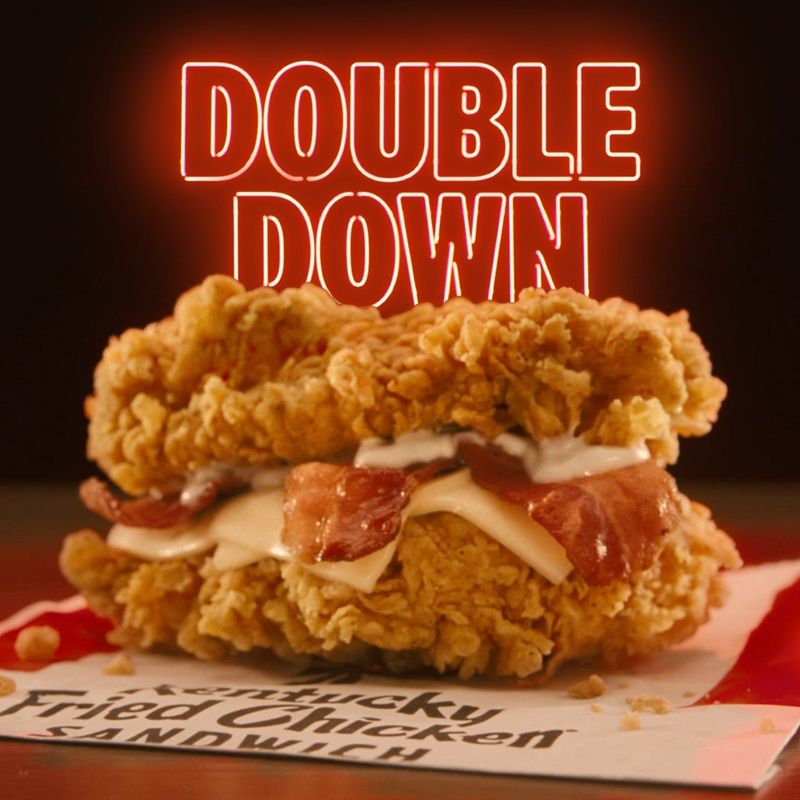
Colonel Sanders tossed conventional sandwich-making rules out the window when KFC unveiled the Double Down in 2010. Throwing away bread entirely, this protein bomb sandwiched bacon, cheese, and sauce between two fried chicken filets. Health experts practically fainted at the sight of it.
With roughly 540 calories and 32 grams of fat, it wasn’t exactly a dietitian’s dream. Yet Americans couldn’t resist its rebellious charm. The Double Down perfectly captured America’s “more is more” food philosophy.
It periodically returns to menus as a limited-time offering, proving that some food abominations are too beloved to stay buried.
2. Taco Bell’s Waffle Taco
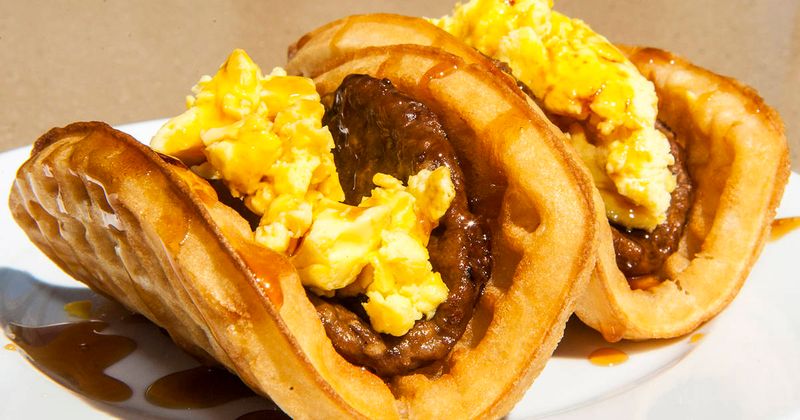
Morning munchies got a bizarre makeover when Taco Bell crashed the breakfast scene in 2014 with their Waffle Taco.
This mind-bending creation featured a folded waffle cradling scrambled eggs and sausage, complete with a side of syrup for dipping. The sweet-meets-savory concoction represented Taco Bell’s ambitious attempt to challenge McDonald’s breakfast dominance.
While it looked like something a sleep-deprived college student might invent at 3 AM, the chain actually spent years developing it. Sadly for waffle enthusiasts, this breakfast oddity disappeared from menus after about a year. Its short life demonstrated just how far fast food chains will go to stand out in America’s crowded breakfast battlefield.
3. Pizza Hut’s Hot Dog-Stuffed Crust
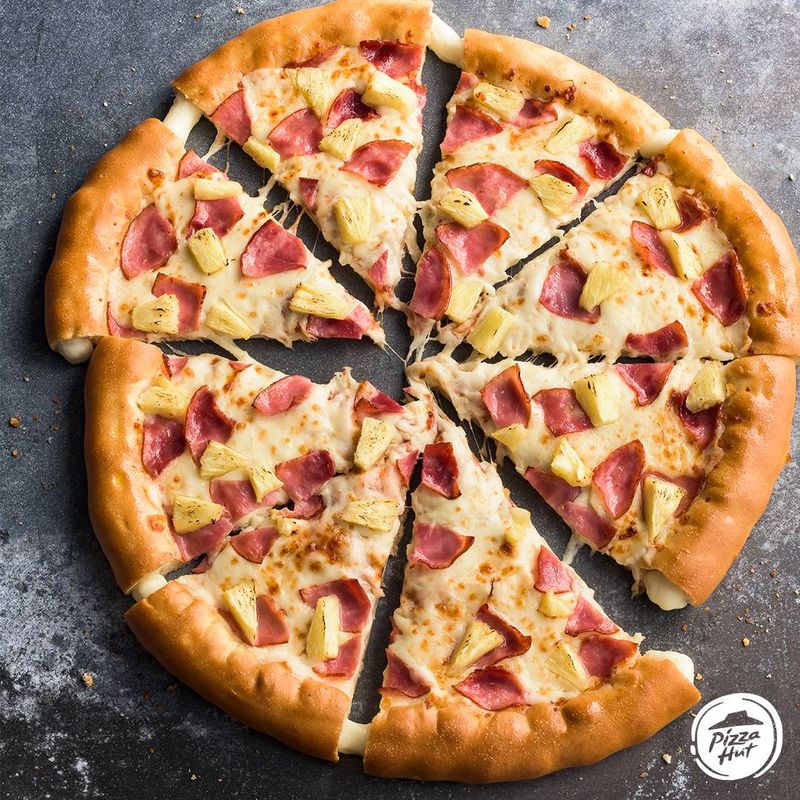
Pizza Hut took American food fusion to disturbing new heights when they introduced a pizza with an entire hot dog baked into the crust. Each slice ended with a hot dog handle, creating the ultimate two-in-one meal nobody asked for but many secretly wanted.
Originally launched overseas, Pizza Hut finally brought this frankenfood to American shores in 2015. The chain clearly understood that Americans struggle with choosing between favorite foods, so why not combine them?
Nutritionists everywhere collectively sighed as this 28-inch circle of excess hit menus. The stuffed crust innovation race had officially gone too far, yet somehow not far enough for America’s appetite for food mashups.
4. McDonald’s McGold Card

Forget chocolate factories – the golden ticket America really wants grants unlimited McDonald’s for life. The legendary McGold Card exists in both physical and digital forms, bestowing upon its lucky holders the power to feast on Big Macs and fries without ever opening their wallet.
Reserved mainly for celebrities, billionaires, and rare sweepstakes winners, this exclusive card represents fast food royalty. Bill Gates reportedly has one. So does Warren Buffett. McDonald’s turned this mythical card into marketing gold in 2018 when they ran a promotion offering everyday Americans a chance to win their own.
The frenzy that followed proved Americans don’t just love free food – they love exclusive access to free food even more.
5. Burger King’s Perfume (Flame)
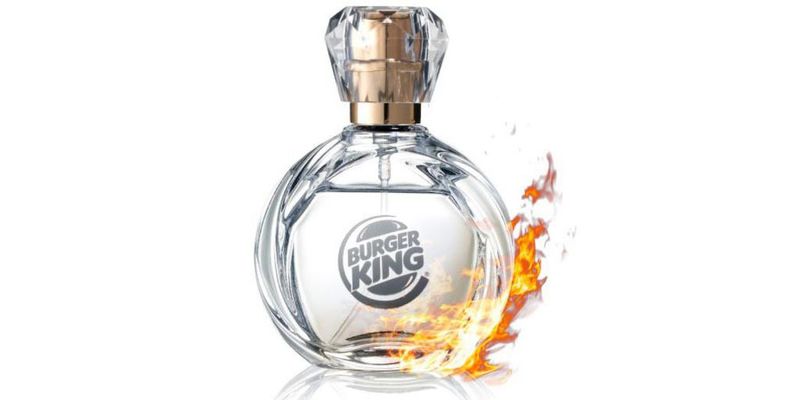
Romance got a meaty makeover in 2008 when Burger King released a cologne called “Flame” that smelled like grilled Whoppers. For just $3.99, anyone could smell like they’d spent the day working the flame-broiler.
Marketed with the slogan “The scent of seduction with a hint of flame-broiled meat,” this bizarre fragrance sold out quickly. Burger King even opened a pop-up perfume shop in New York City to promote it. Was it a joke? A publicity stunt? Absolutely. But it also reflected America’s bizarre brand loyalty, where fans don’t just want to eat their favorite fast food – they want to embody it.
Nothing says “I’m committed to this relationship” like smelling like a hamburger.
6. Carl’s Jr. Racy Commercials
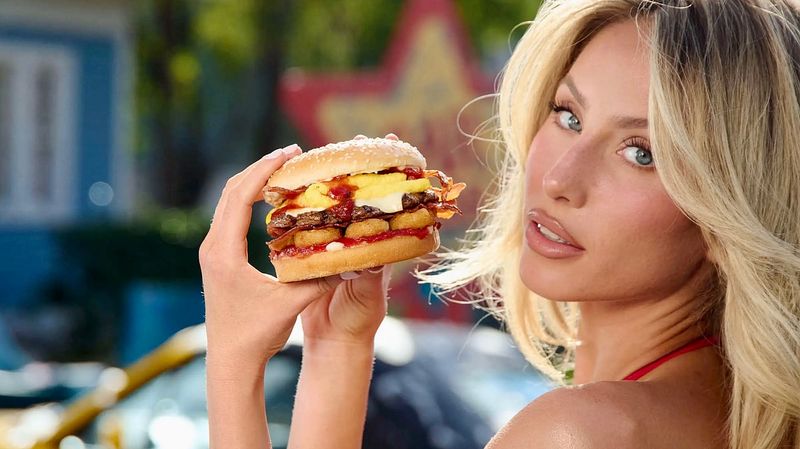
Carl’s Jr. turned burgers into forbidden fruit with their infamous commercials featuring models in bikinis sensually devouring messy sandwiches. These ads barely showed the actual food, focusing instead on sauce dripping down chins and over exposed skin.
Paris Hilton washing a Bentley while eating a burger became their most notorious ad in 2005. Kate Upton, Kim Kardashian, and Charlotte McKinney all took turns making fast food uncomfortably sexy. The chain finally abandoned this strategy in 2017, admitting they’d gone too far even for American advertising standards.
These commercials represented peak “sex sells” marketing that somehow connected juicy burgers with scantily clad celebrities in America’s collective consciousness.
7. Cheetos-Inspired Menu Items (from multiple chains)
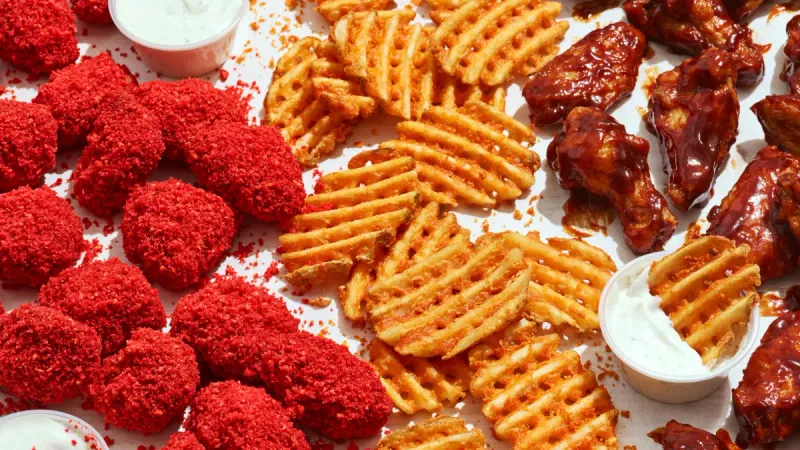
America’s orange-dusted snack obsession infiltrated fast food menus everywhere through bizarre Cheetos collaborations. Burger King unleashed Cheetos-crusted mac and cheese sticks. Taco Bell created a burrito stuffed with Cheetos. KFC even offered chicken coated in crushed Cheetos.
These neon orange monstrosities perfectly captured America’s love of brand crossovers. The appeal wasn’t just the flavor but the novelty of seeing two beloved junk foods collide in radioactive harmony.
Each limited-time offering generated massive social media buzz from curious customers wondering if these creations would taste like childhood snack time or culinary disaster. Either way, Americans couldn’t resist foods that promised to turn their fingers that familiar dusty orange.
8. Krispy Kreme’s Donut Burger
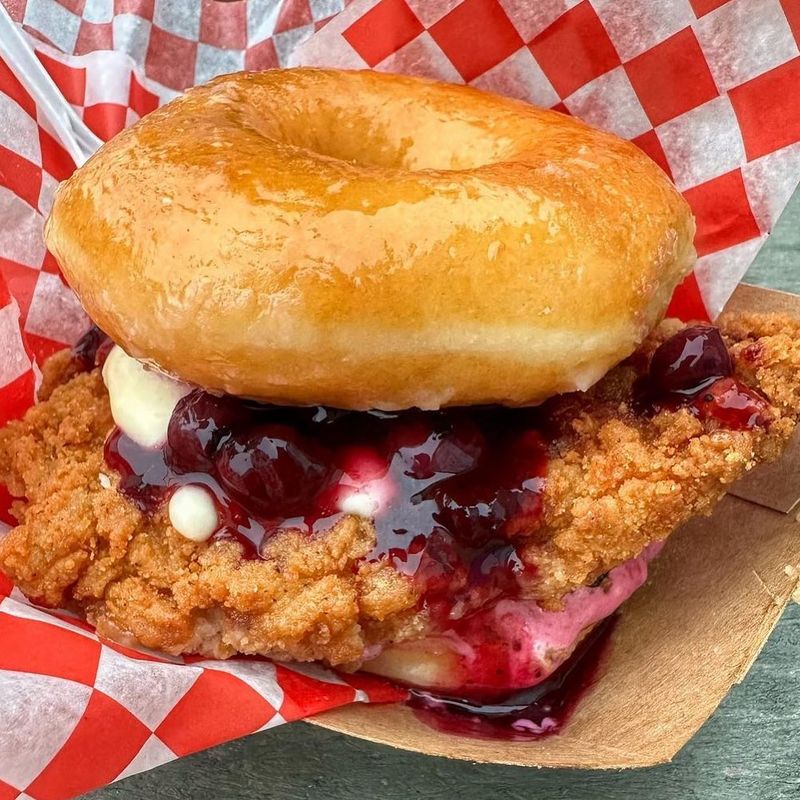
Sweet and savory collided in artery-clogging harmony when Krispy Kreme’s glazed donuts replaced hamburger buns. This carnival food fever dream featured a beef patty, cheese, and bacon sandwiched between two entire glazed donuts, creating a sticky, sweet mess.
Originally a state fair novelty, this sugar-and-meat bomb eventually made its way to restaurant menus. The combination of hot beef juices mixing with donut glaze created a uniquely American flavor experience that nutritionists describe as “please stop immediately.”
Clocking in at roughly 1,000 calories per burger, this indulgence represented peak American food innovation: take two perfect foods and force them together regardless of whether they belong in the same meal.
9. Arby’s Meat Mountain
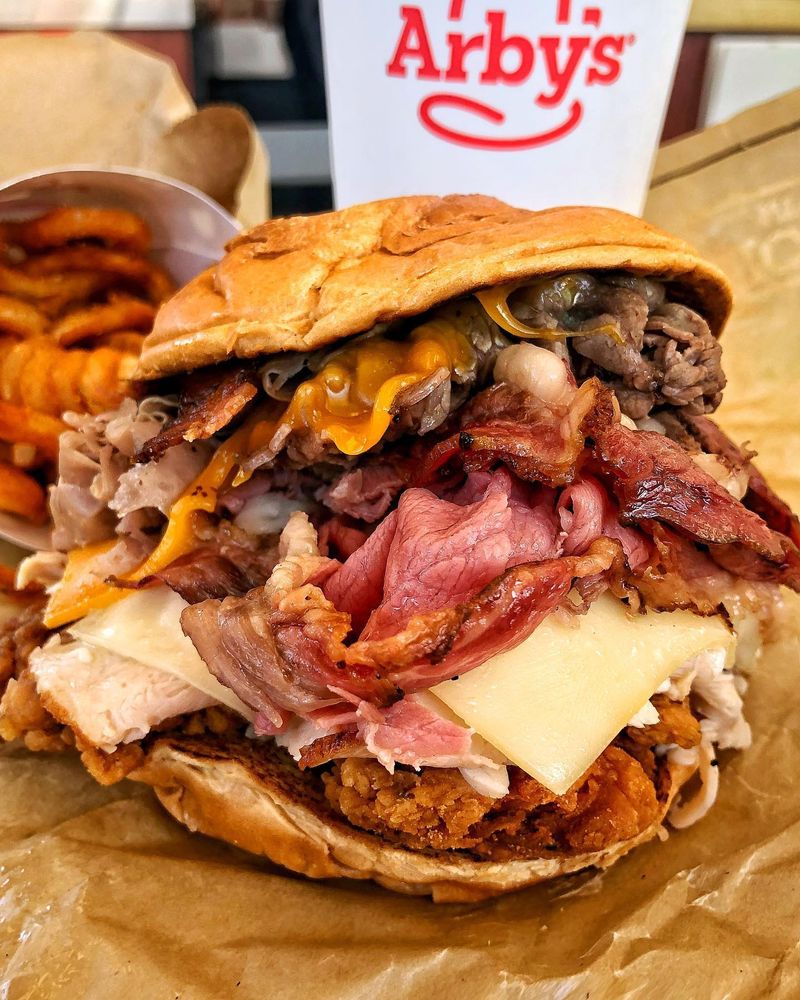
Fast food excess reached its peak with Arby’s infamous Meat Mountain – a secret menu sandwich stacking every single meat they offer between two buns. This protein skyscraper contains chicken tenders, roast turkey, ham, corned beef, brisket, Angus steak, roast beef, and bacon, plus Swiss and cheddar cheese.
The sandwich began as a promotional poster displaying all Arby’s meats. When customers started asking to buy the actual stack, a legend was born. Weighing nearly a pound and packing around 1,275 calories, the Meat Mountain represents American abundance gone mad. Nothing says “land of plenty” quite like consuming eight different animals in a single sitting for about $10.
10. Dunkin’s Snackin’ Bacon
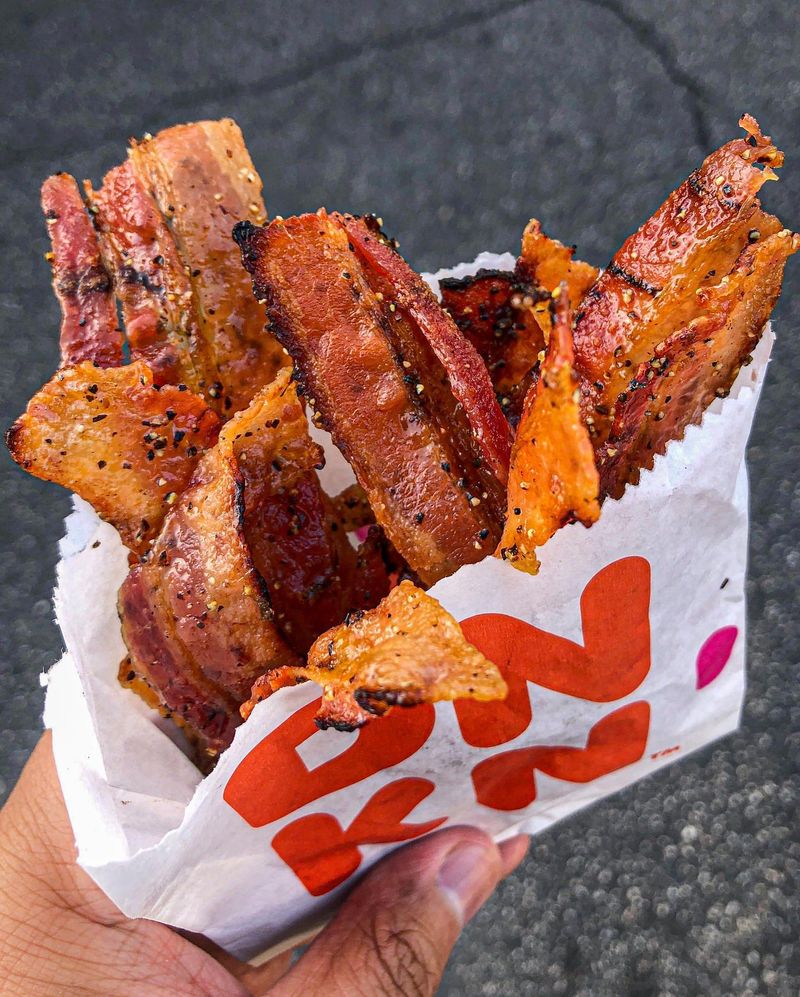
America’s bacon obsession reached its logical conclusion when Dunkin’ decided to sell just… bacon. Their Snackin’ Bacon featured eight half-strips of sweet black pepper bacon served in a paper pouch like french fries.
Launched in 2020, this protein-packed offering targeted on-the-go Americans who apparently couldn’t be bothered with the bread part of a bacon sandwich. The sweet-and-smoky strips were designed to be eaten while driving or walking.
Only in America would a coffee chain decide to sell standalone bacon as a snack food. Dunkin’ basically admitted what we already knew – many Americans were just ordering breakfast sandwiches for the bacon anyway, so why not cut out the middleman?
11. Starbucks’ Unicorn Frappuccino
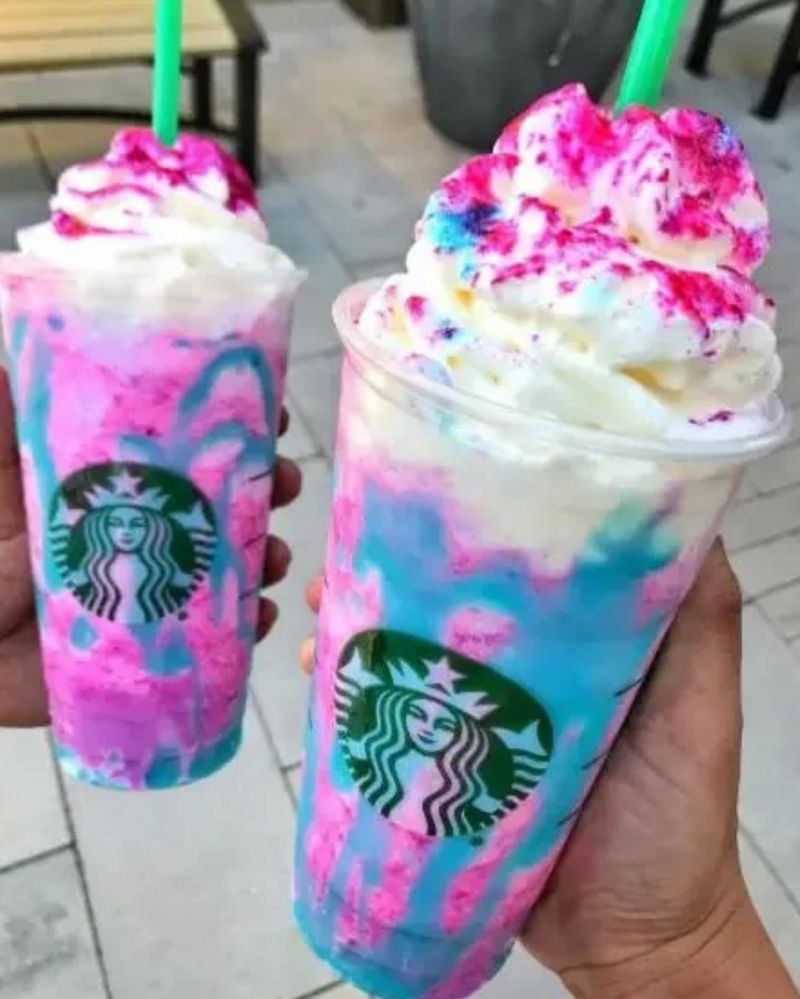
Social media feeds exploded in 2017 when Starbucks unleashed their color-changing Unicorn Frappuccino. This magical concoction started bright purple-pink, transformed to blue when stirred, and changed flavors from sweet to sour with each sip.
Baristas nationwide cried as they made thousands of these complex drinks during its five-day limited run. The ingredient list read like a chemistry experiment, containing mango syrup, blue drizzle, pink powder, and sour blue powder. The drink perfectly captured America’s Instagram food culture – it wasn’t designed to taste good but to look amazing in photos.
Customers waited in long lines for a drink many admitted tasted terrible just to post pictures proving they’d experienced the viral sensation.
12. IHOP’s Fake Name Change to IHOb
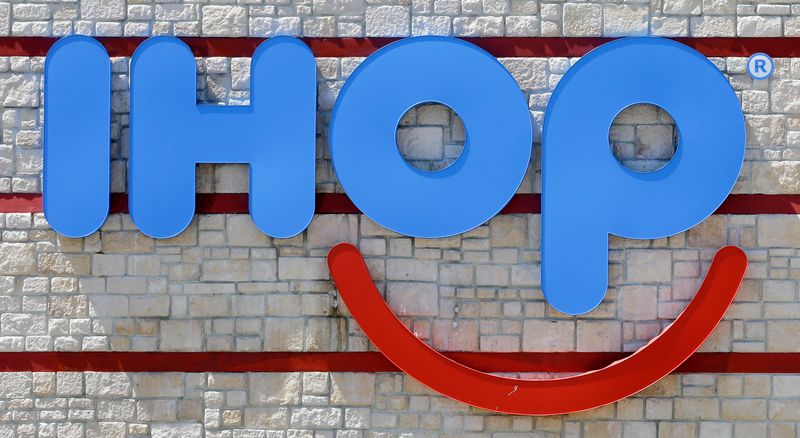
Pancake lovers nationwide experienced collective confusion in 2018 when IHOP announced it was changing its name to “IHOb.” The breakfast chain built suspense for days before revealing the ‘b’ stood for burgers, not breakfast.
This marketing stunt aimed to promote their new burger line and remind customers they served more than just pancakes. Social media erupted with theories and mockery, while competitors like Wendy’s and Burger King ruthlessly trolled the temporary rebrand.
Despite the ridicule, IHOP’s burger sales quadrupled after the campaign. The name change was never real, but it demonstrated America’s unique food marketing landscape where restaurants will risk their entire identity for viral attention.
13. Doritos Locos Tacos at Taco Bell
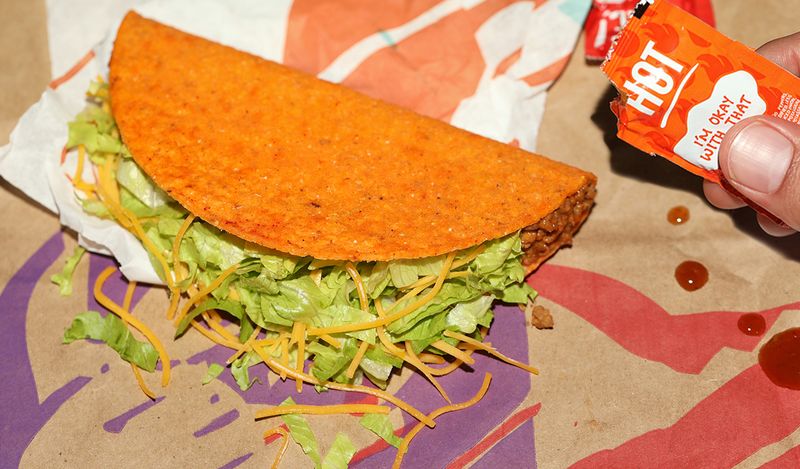
Taco Bell forever changed fast food collaborations in 2012 when they created a taco shell entirely made of Doritos. The neon orange, nacho cheese-flavored shells housed the usual taco fillings, leaving fingers dusty with that signature Doritos powder.
This wasn’t just a random mashup – it was engineering brilliance. Taco Bell spent years developing a shell that maintained the Doritos flavor while still functioning as a proper taco vessel. Americans devoured over a billion Doritos Locos Tacos in the first year alone.
The product was so successful that Taco Bell hired 15,000 new employees just to keep up with demand. Nothing represents American fast food innovation better than turning one junk food directly into another.
Leave a comment